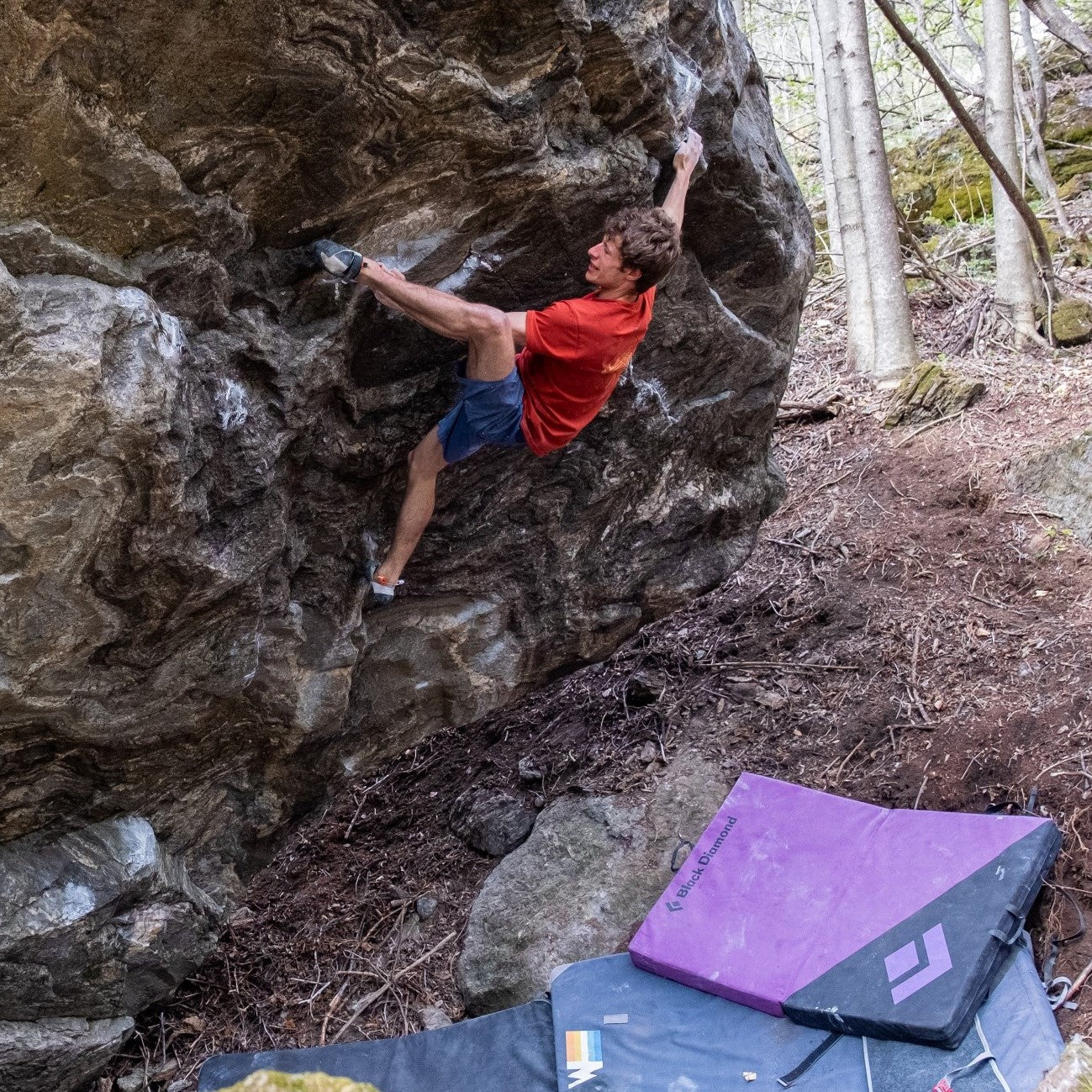
DEEP INTO THE COMMUNITY
Black Diamond Athlete Angela Hawse is a guide for change.
Add 100 EUR more to quality for free Shipping!
€0,00 EUR

Whether it's at the local gym or a dreamy vacation cliff in the Mediterranean, we've all been there: You finish a sport climb and are ready to clip your rope through the anchors (e.g., cold shuts, leaver biners, chain links, etc.) when you notice that countless lowerings and top roping have left gnarly rope grooves in the anchors. Will these grooved-out anchors hold? Will the sharp edges trash my rope?
Recently a friend of mine was doing his part at a local sport crag by replacing old bolts and rope-grooved anchors. He pulled these off and wanted me to test them to see how weak they were. (I'm not going to get into the technicalities, pluses or minuses of different kinds of anchors and am not condoning anything in anyway—I'm just looking at only one style of cold shut, one test, two data points, just out of curiosity more than anything.)




I've tested (well, I don't actually test anything, but I have a crack team of engineers that perform the testing) many rope-grooved carabiners before and had a sneaky suspicion what I'd see. I had never actually tested cold shuts, however, so I thought I'd have the QA engineers here at BD test these old ones and compare them to a new one.
Tests
Measuring the rope groove of the test samples, the reduction in thickness was about 25%. Therefore… the used cold shuts would be 25% weaker, right? Wrong.

The rope groove forces the rope to stay in line with the main axis and direction of load of the cold shut, whereas with a new cold shut, as the load increases, the rope is able to slide out and cantilevers it open at a reduced load. So rather than reduce the tensile strength of the shut due to removal of material, the groove seats the rope onto the spine so that the shut holds more weight before it starts to deform.
Conclusions/Comments/Remarks
Just because a rope-grooved anchor may be stronger, however, doesn't make it better. The sharp edges of rope-grooved anchors and biners can potentially damage the rope's sheath. If you see anchors or biners out in the field that look beat up, do your part and replace them. You can also use your own quickdraws or biners at anchors in order to save on wear and tear of the fixed anchors.
Be safe out there,
KP
Kolin Powick (KP) is a Mechanical Engineer hailing from Calgary, Canada. He has nearly 20 years of experience in the engineering field and has been Black Diamond's Director of Global Quality since 2002. Kolin oversees the testing of all of Black Diamond's gear from the prototype phase through continual final production random sample testing. If you have a technical question for KP, please email him at askkp@bdel.com and he will TRY to respond.



Follow BD Athlete Yannick Glatthard deep into the Swiss Alps as he shares his home...
Follow BD Athlete Yannick Glatthard deep into the Swiss Alps as he shares his home mountains with close friends.

Follow Dorian Densmore and Mya Akins for another winter season of steep Alaskan spines, backyard...
Follow Dorian Densmore and Mya Akins for another winter season of steep Alaskan spines, backyard couloirs, and deep adventures in the mountains.


Watch BD Athlete Alex Honnold throw down on some hard trad high above Tahoe.



In 2012, filmmaker and photographer Ben Ditto, and professional climber Mason Earle equipped an immaculate...
In 2012, filmmaker and photographer Ben Ditto, and professional climber Mason Earle equipped an immaculate line in Tuolumne’s high country. But their attempts to free the route were thwarted when Mason’s life changed drastically. With the help of Connor Herson, Ditto and Mason found a way to keep the dream alive.


Watch and learn as our Field Test Coordinator runs you through a step by step...
Watch and learn as our Field Test Coordinator runs you through a step by step process of trimming and setting up any STS-style Black Diamond skin.


Every climber has a few lines they dream about. Whether inspired or haunted—or sometimes both—these...
Every climber has a few lines they dream about. Whether inspired or haunted—or sometimes both—these lines can push us beyond what we thought we were capable of, in turn teaching us who we really are. BD Ambassador Ethan Salvo recently restructured his entire life to focus on two climbs that pulled him into the void with only one way out … getting to the top. This is his story of sending Dreamcatcher and becoming the first Canadian to climb V16 in the same week.

BD Athlete Connor Herson spent as many weekends as possible in the Valley this spring...
BD Athlete Connor Herson spent as many weekends as possible in the Valley this spring during a grueling quarter at Stanford. The objective? Ground up, in-a-day ascents.
